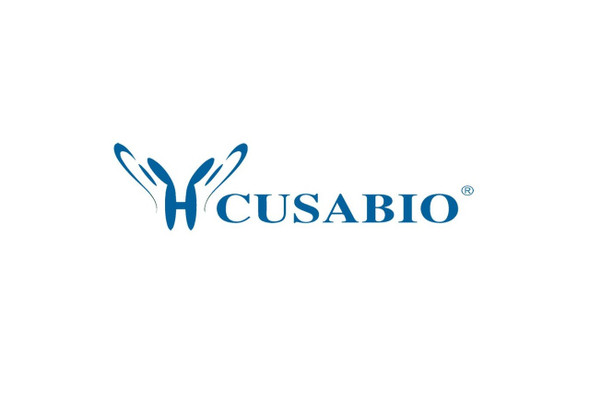Cusabio Human Recombinants
Recombinant Human Granulocyte colony-stimulating factor (CSF3), partial | CSB-EP006049HU1
- SKU:
- CSB-EP006049HU1
- Availability:
- 13 - 23 Working Days
Description
Recombinant Human Granulocyte colony-stimulating factor (CSF3), partial | CSB-EP006049HU1 | Cusabio
Alternative Name(s): Colony-stimulating factor ;CSFMolgramostin;Sargramostim
Gene Names: CSF3
Research Areas: Immunology
Organism: Homo sapiens (Human)
AA Sequence: VQEATPLGPASSLPQSFLLKCLEQVRKIQGDGAALQEKLVSECATYKLCHPEELVLLGHSLGIPWAPLSSCPSQALQLAGCLSQLHSGLFLYQGLLQALEGISPELGPTLDTLQLDVADFATTIWQQMEELGMAPALQPTQGAMPAFASAFQRRAGGVLVASHLQSFLEVSYRV
Source: E.coli
Tag Info: N-terminal 6xHis-tagged
Expression Region: 27-200aa
Sequence Info: Partial
MW: 22.6 kDa
Purity: Greater than 90% as determined by SDS-PAGE.
Relevance: Cytokine that stimulates the growth and differentiation of hatopoietic precursor cells from various lineages, including granulocytes, macrophages, eosinophils and erythrocytes.
Reference: SeattleSNPs variation discovery resourceThe DNA sequence and comparative analysis of human chromosome 5.Schmutz J., Martin J., Terry A., Couronne O., Grimwood J., Lowry S., Gordon L.A., Scott D., Xie G., Huang W., Hellsten U., Tran-Gyamfi M., She X., Prabhakar S., Aerts A., Altherr M., Bajorek E., Black S. , Branscomb E., Caoile C., Challacombe J.F., Chan Y.M., Denys M., Detter J.C., Escobar J., Flowers D., Fotopulos D., Glavina T., Gomez M., Gonzales E., Goodstein D., Grigoriev I., Groza M., Hammon N., Hawkins T., Haydu L., Israni S., Jett J., Kadner K., Kimball H., Kobayashi A., Lopez F., Lou Y., Martinez D., Medina C., Morgan J., Nandkeshwar R., Noonan J.P., Pitluck S., Pollard M., Predki P., Priest J., Ramirez L., Retterer J., Rodriguez A., Rogers S., Salamov A., Salazar A., Thayer N., Tice H., Tsai M., Ustaszewska A., Vo N., Wheeler J., Wu K., Yang J., Dickson M., Cheng J.-F., Eichler E.E., Olsen A., Pennacchio L.A., Rokhsar D.S., Richardson P., Lucas S.M., Myers R.M., Rubin E.M.Nature 431:268-274(2004)
Storage: The shelf life is related to many factors, storage state, buffer ingredients, storage temperature and the stability of the protein itself. Generally, the shelf life of liquid form is 6 months at -20?/-80?. The shelf life of lyophilized form is 12 months at -20?/-80?.
Notes: Repeated freezing and thawing is not recommended. Store working aliquots at 4? for up to one week.
Function: Granulocyte/macrophage colony-stimulating factors are cytokines that act in hematopoiesis by controlling the production, differentiation, and function of 2 related white cell populations of the blood, the granulocytes and the monocytes-macrophages. This CSF induces granulocytes.
Involvement in disease:
Subcellular Location: Secreted
Protein Families: IL-6 superfamily
Tissue Specificity:
Paythway: Jak-STATsignalingpathway
Form: Liquid or Lyophilized powder
Buffer: If the delivery form is liquid, the default storage buffer is Tris/PBS-based buffer, 5%-50% glycerol. If the delivery form is lyophilized powder, the buffer before lyophilization is Tris/PBS-based buffer, 6% Trehalose, pH 8.0.
Reconstitution: We recommend that this vial be briefly centrifuged prior to opening to bring the contents to the bottom. Please reconstitute protein in deionized sterile water to a concentration of 0.1-1.0 mg/mL.We recommend to add 5-50% of glycerol (final concentration) and aliquot for long-term storage at -20?/-80?. Our default final concentration of glycerol is 50%. Customers could use it as reference.
Uniprot ID: P09919
HGNC Database Link: HGNC
UniGene Database Link: UniGene
KEGG Database Link: KEGG
STRING Database Link: STRING
OMIM Database Link: OMIM









